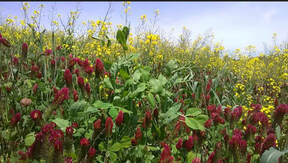
Cover crops are one of the many environmentally friendly farming practices that have been applied to both large-scale farms and home gardens. According to an article written by Andy Clark from SARE Outreach, “A cover crop is a plant that is used primarily to slow erosion, improve soil health, enhance water availability, smother weeds, help control pests and diseases, increase biodiversity, and bring a host of other benefits to your farm.” I find this to be a great definition of what a cover crop is because it explains how many benefits cover crops can bring to your farm.

After planting your cover crop, you want it to mature as long as possible without making seeds. When the crop reaches maturity, you must figure out how you will kill it. By killing the crop, you are allowing it to provide nutrients to soil as well as protecting it from the elements. There are different ways to kill a cover crop depending on how much space you are taking up. For example, home gardeners typically mow or weed eat to kill their cover crops. An important component to take into consideration is whether the crop you’re working with will completely die from mowing. If not, the crop will regenerate, and the soil won’t receive the full benefits from the crop.

https://www.sare.org/resources/cover-crops/
https://organicgrowersschool.org/gardeners/library/basics-of-cover-cropping/
https://joegardener.com/podcast/100-understanding-cover-crops-the-basics-and-beyond-with-jack-algiere/
https://www.youtube.com/watch?v=9i_ocliy4Qk
-Keely Charles

 RSS Feed
RSS Feed
